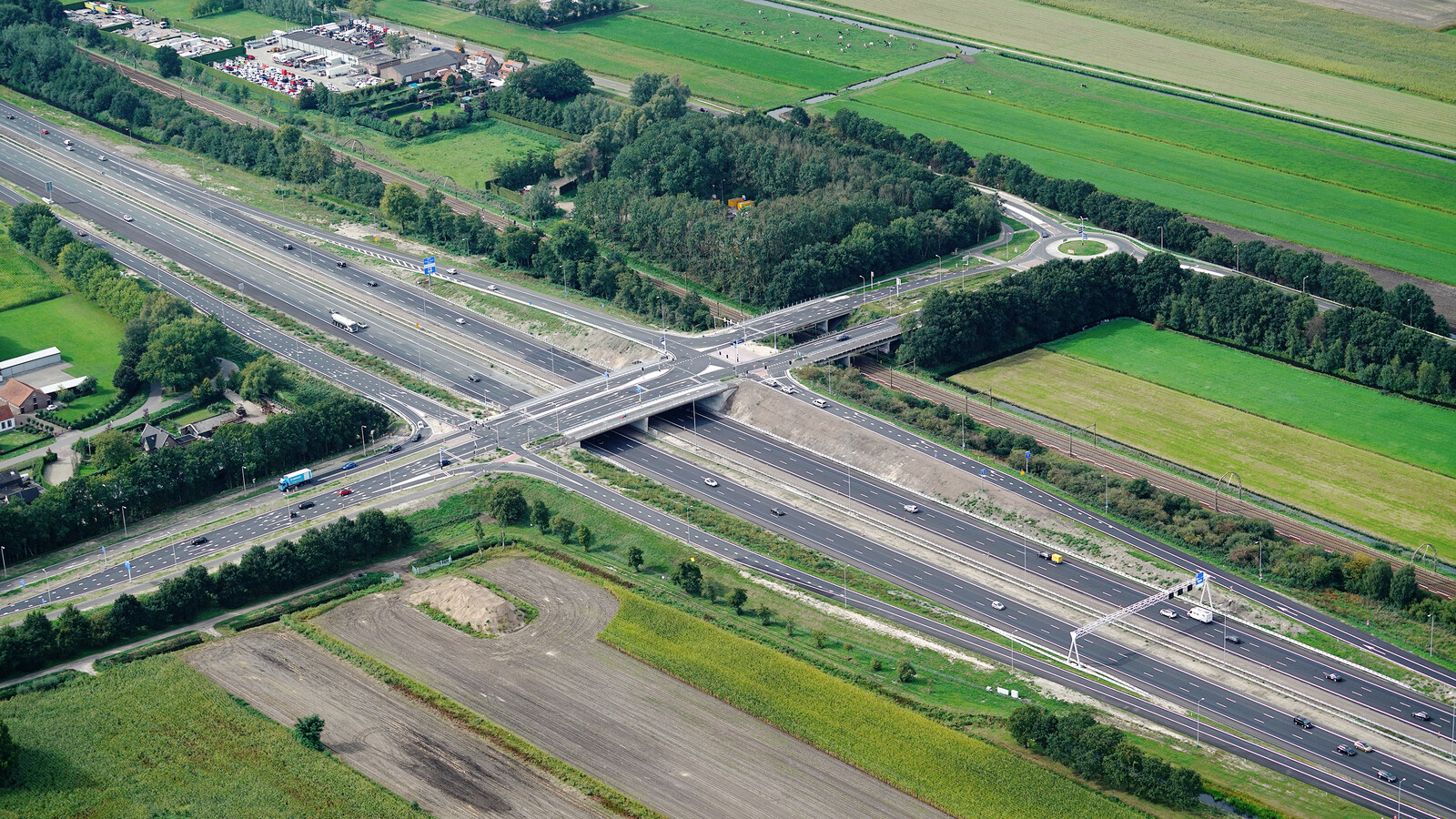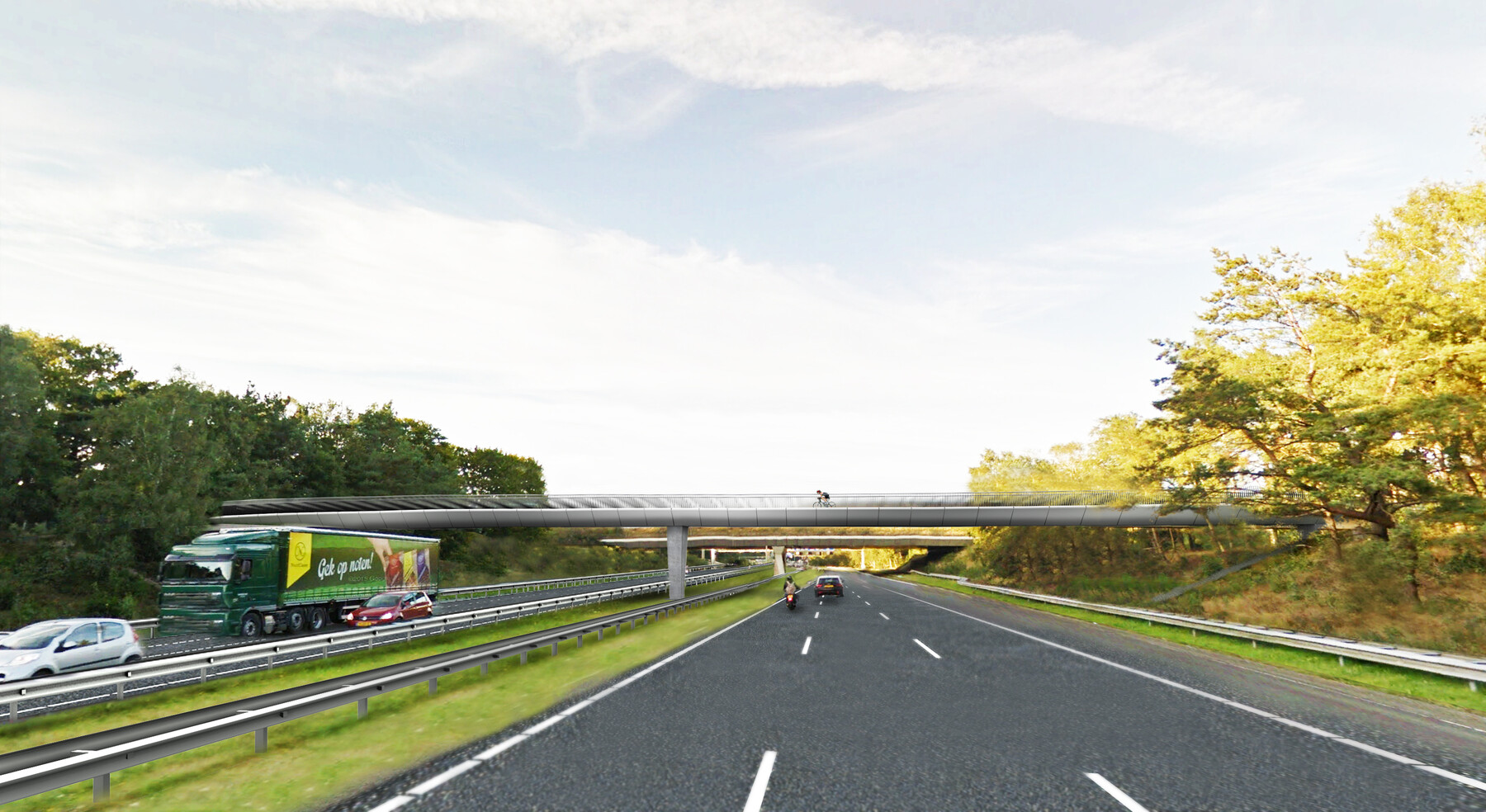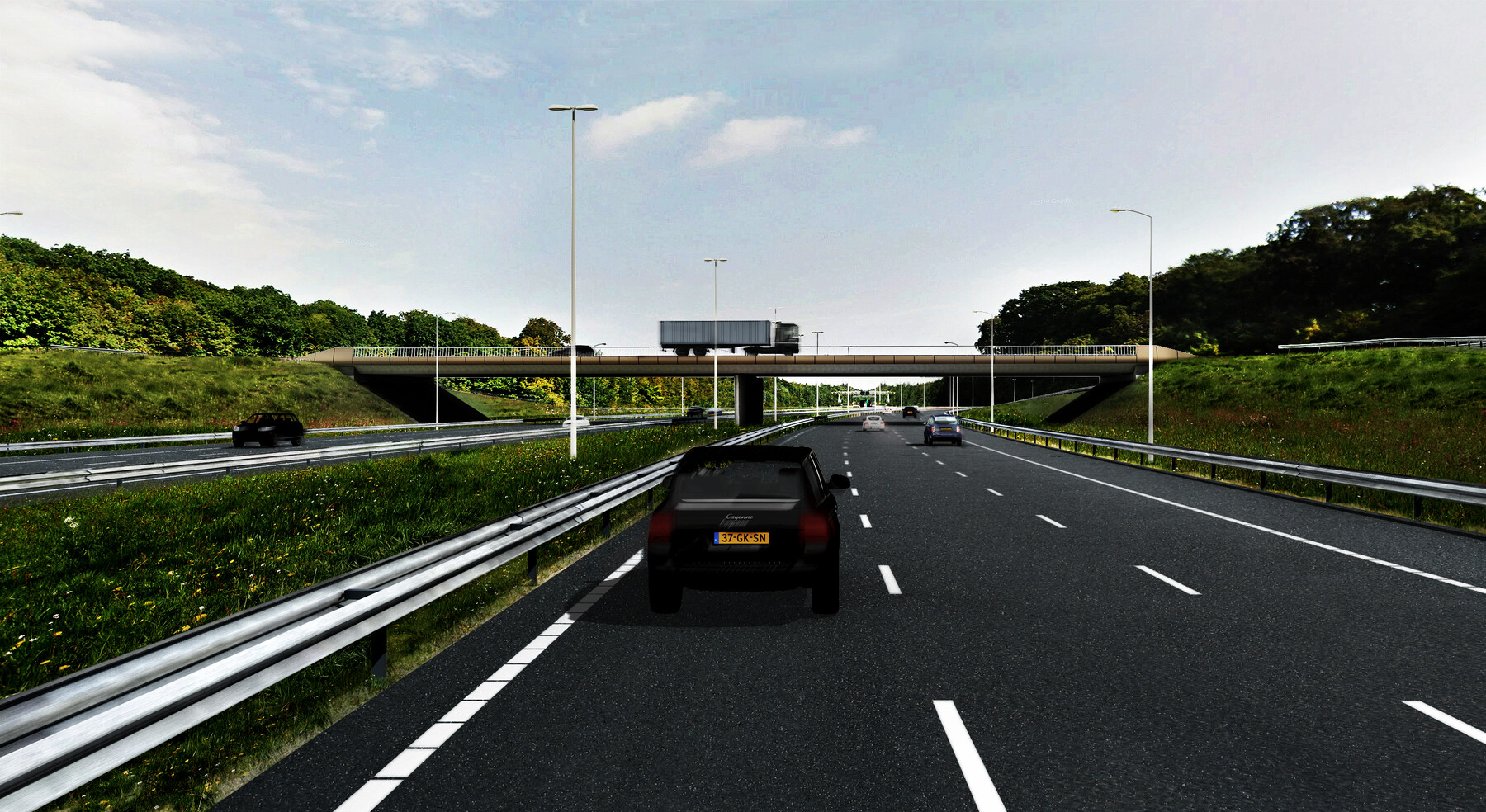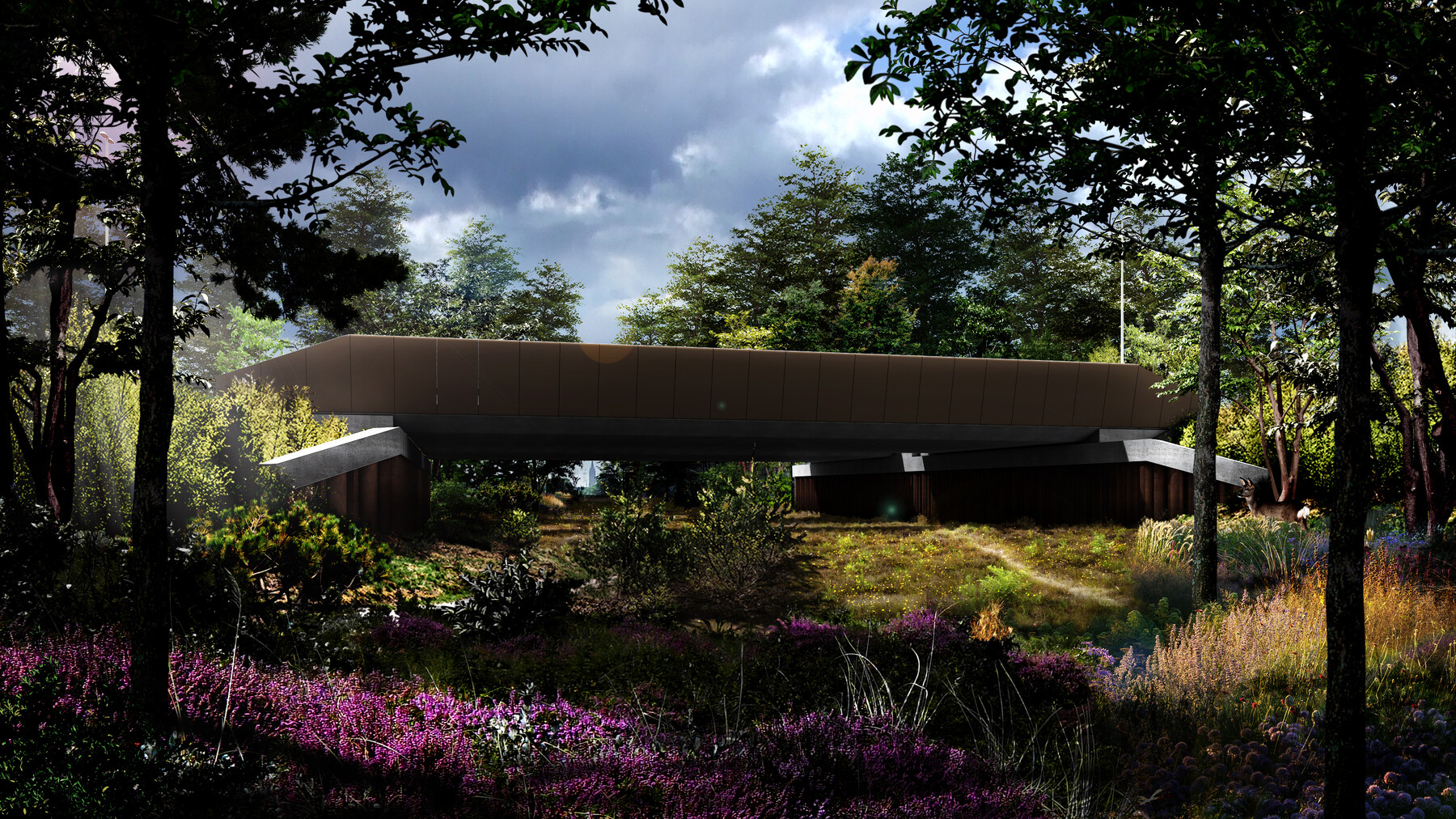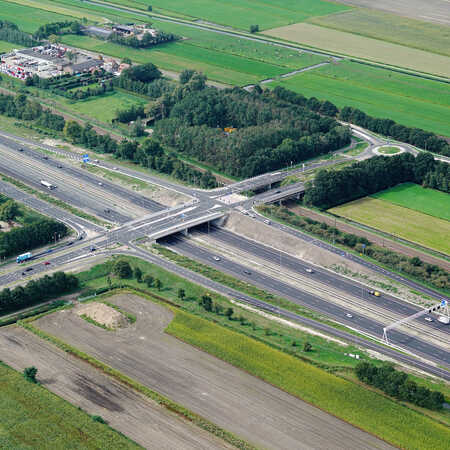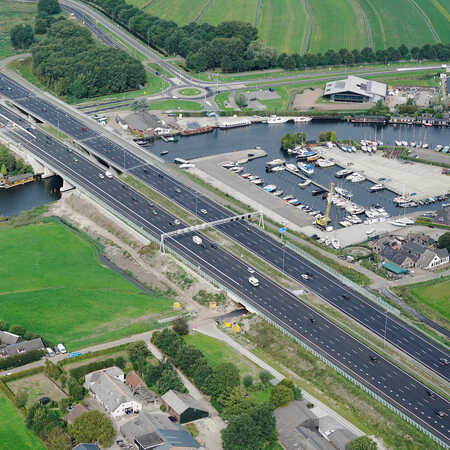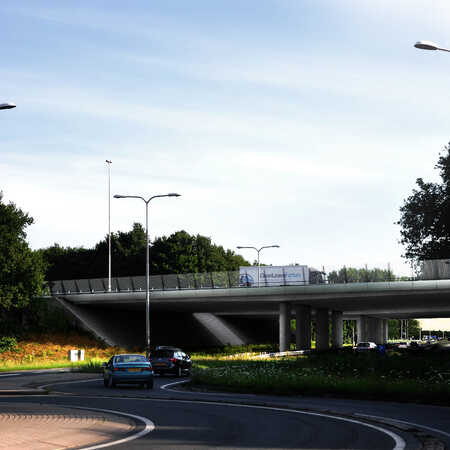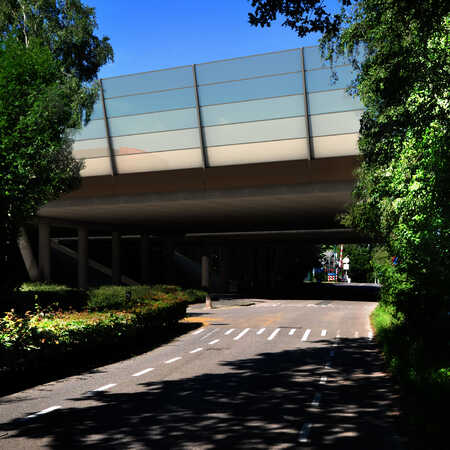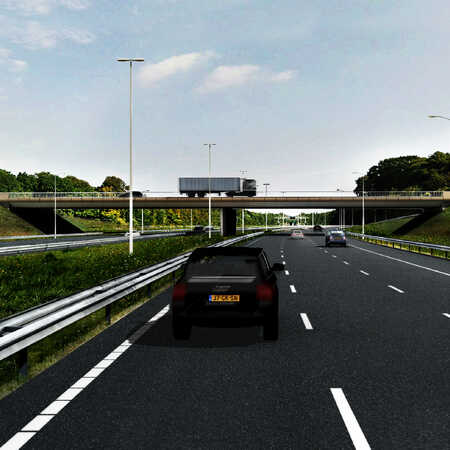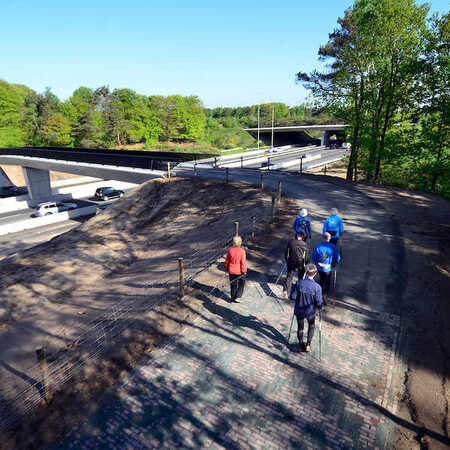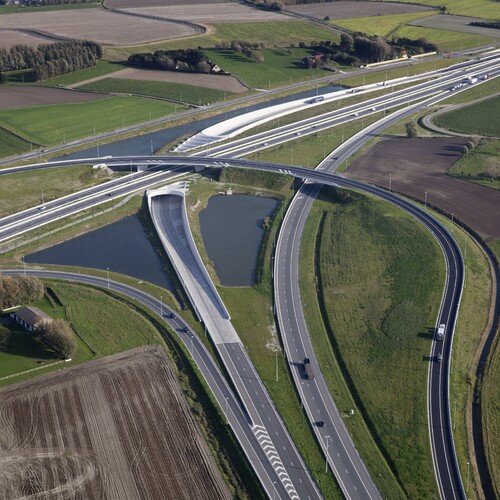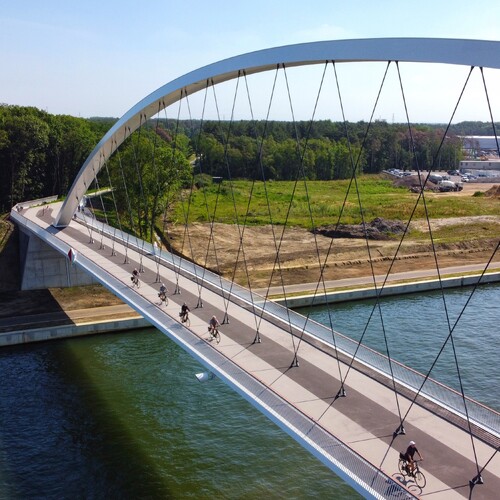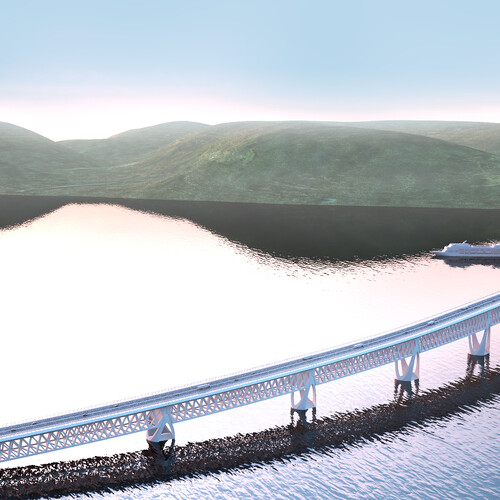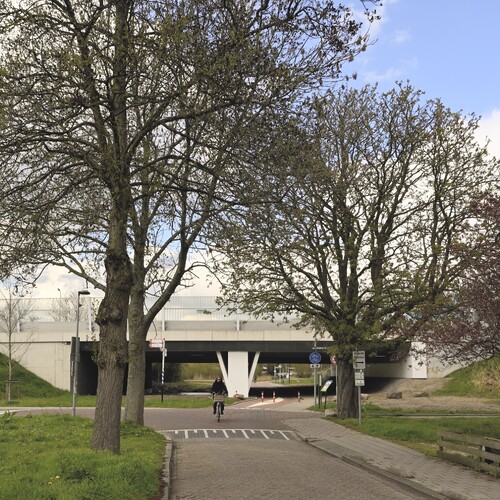Densely populated area along the A27
In a relatively densely populated area it is difficult to merge the wider motorway into the landscape and to take into consideration that not only the motorists are to have a safe, quiet driving experience with a clear view, but that also the residents nearby the motorway should experience minimal inconvenience.
The design ZJA provided for this stretch of the motorway A27 aims to find subtle additions and adaptations to the existing structures of the viaducts and flyovers, in order to underplay the expansion of the motorway as much as possible, using balanced ratios between volume and light. The thickness of the deck, the shape and distance between columns, the choice of material and applied coating, everything plays a part in creating a natural look.
